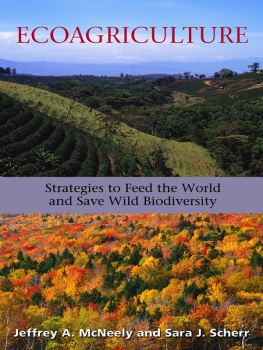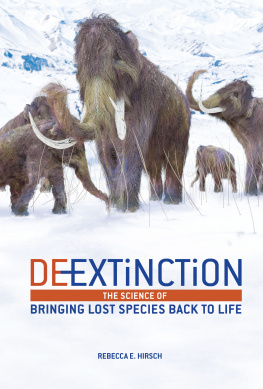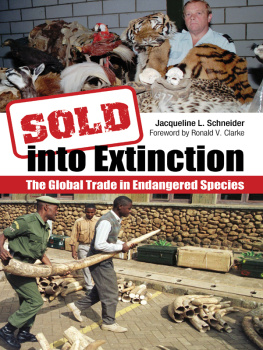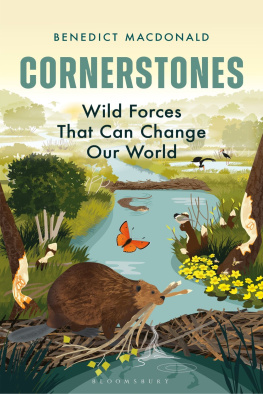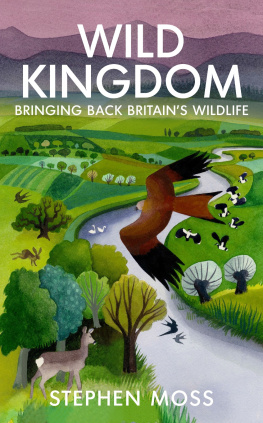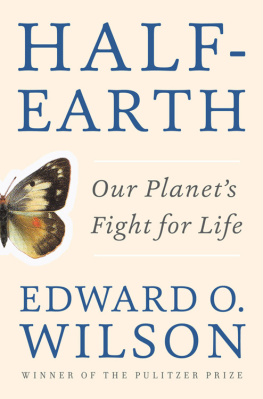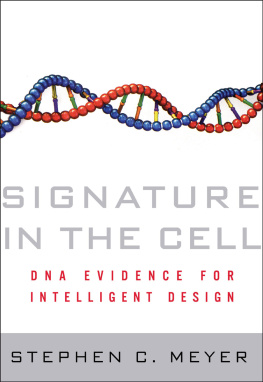THE END
OF THE WILD
THE END
OF THE WILD
Stephen M. Meyer
BOSTON REVIEW Somerville, Mass.
THE MIT PRESS Cambridge, Mass. London, England
Copyright 2006 Massachusetts Institute of Technology
All rights reserved. No part of this book may be reproduced in any form by any electronic or mechanical means (including photocopying, recording, or information storage and retrieval) without permission in writing from the publisher.
MIT Press books may be purchased at special quantity discounts for business or sales promotional use. For information, please e-mail or write to Special Sales Department, The MIT Press, 55 Hayward Street, Cambridge, MA 02142.
This book was set in Adobe Garamond by Boston Review and was printed and bound in the United States of America.
Designed by Joshua J. Friedman
Library of Congress Cataloging-in-Publication Data Meyer, Stephen M.
The end of the wild / Stephen M. Meyer.
p. cm. (Boston Review books)
Includes bibliographical references.
ISBN-13: 978-0-262-13473-6 (hardcover : alk. paper)
ISBN-10: 0-262-13473-x (hardcover : alk. paper)
1. Biodiversity conservation. I. Title.
QH75.M478 2006
333.95dc22 2006021914
10 9 8 7 6 5 4 3 2 1
d_r0
For Seth and Debbie
THE END
OF THE WILD
1
FOR THE PAST SEVERAL BILLION YEARS evolution on Earth has been driven by small-scale incremental forces, such as sexual selection, punctuated by cosmic-scale disruptionsplate tectonics, planetary geochemistry, global climate shifts, and even extraterrestrial asteroids. Sometime in the last century that changed. Today the guiding hand of natural selection is unmistakably human, with potentially Earth-shaking consequences.
The fossil record and contemporary field studies suggest that the average rate of extinction over the past hundred million years has hovered at several species per year. Today the extinction rate surpasses 3,000 species per year and is accelerating rapidly; it may soon reach the tens of thousands. In contrast, new species are appearing at a rate of less than one per year.
Over the next 100 years or so as many as half of the Earth's species, representing a quarter of the planet's genetic stock, will functionally if not completely disappear. The land and the oceans will continue to teem with life, but it will be a peculiarly homogenized assemblage of organisms unnaturally selected for their compatibility with one fundamental force: us. Nothingnot national or international laws, global bio-reserves, local sustainability schemes, or even wildlands fantasiescan change the current course. The broad path for biological evolution is now set for the next several million years. And in this sense the extinction crisisthe race to save the composition, structure, and organization of biodiversity as it exists todayis over, and we have lost.
2
THIS IS NOT THE WIDE-EYED PROPHECY of radical Earth First! activists or the doom-and-gloom tale of corporate environmentalists trying to boost fundraising. It is the story that lurks behind a growing mountain of scientific papers published in prestigious scientific journals such as Nature, Science, and the Proceedings of the National Academy of Sciences over the past decade.
Our sense of the wild is perhaps best captured in the opening paragraphs of the U.S. Wilderness Act of 1964, which defines wilderness as follows:
an area where the earth and its community of life are untrammeled by man, where man himself is a visitor who does not remain ... retaining its primeval character and influence, without permanent improvements or human habitation, which is protected and managed so as to preserve its natural conditions and which generally appears to have been affected primarily by the forces of nature, with the imprint of man's work substantially unnoticeable.
Fundamental is the notion of a landscape where the handprint of humanity is invisibleand specifically where the forces of natural selection smother those of human selection. The problem is that there is virtually no place left on Earth that fits this definition. From the most remote corners of the frozen Arctic to the darkest interiors of the Amazon's tropical rainforests, the impact of humanity now drives biological systems. What separates the Brazilian rainforest from New York's Adirondack Forest Preserve from Manhattan's Central Park is only a matter of degree.
Through our extraordinary capacity to modify the world around us, we human beings are creating a three-tiered hierarchy of life. The great irony here is that this anthropogenic transformation of the biosphere springs as much from our deliberate efforts to protect and manage the life around us as from our wanton disregard for the natural environment.
At one extreme we are making the planet especially hospitable for the weedy species: plants, animals, and other organisms that thrive in continually disturbed, human-dominated environments. The term is not pejorative but descriptive. Weedy organisms are adaptive generalistsspecies that flourish in a variety of ecological settings, switch easily between food types, and breed prolifically More significantly, many have their needs met more completely and efficiently by humans than by Mother Nature. In the United States, for example, one can find five times as many raccoons (Procyon lotor) per square mile in suburban settings than in corresponding natural populations in the wild. Aquatic plants such as Eurasian water-milfoil (Myriophyllum spicatum) and hydrilla (Hydrilla verticillata), growing in streams, rivers, ponds, and lakes enriched by the runoff from farms, suburban development, and sewage treatment facilities, reach densities never encountered in natural settings.
From dandelions to coyotes, weedy species will enjoy expanding populations, spatial distribution, ecological dominance, and opportunities for further speciation far into the future. Some weedy species have become so comfortable living among us that we now consider many of them to be pests, requiring active control measures: the common (Norway) rat (Rattus norvegicus) and the white-tailed deer (Odocoileus virginianus) come immediately to mind.
Living on the margins in ever-decreasing numbers and contracting spatial distribution are relic species. Relic species do not thrive in human-dominated environmentswhich now nearly cover the planet. Some relic species have always been rare, persisting in small, isolated populations, often in extreme or remote environments. Having adapted to these specialized conditions, they have survived largely through benign neglect, inhabiting places that humans traditionally did not bother to go.
But little on Earth is remote anymore, and accelerating human pressures on the landscape threaten to overrun even specialized habitats. When the Nature Conservancy in 2004 undertook a five-week expedition into four Borneo karst systems, they quickly discovered a number of insect and plant species previously unknown to science as well as cataloguing 124 species of bird and 34 species of bats. They also discovered that logging and mining activity was moving rapidly into the area. The very specialization that allows natural relics to live in these habitats makes it impossible for them to disperse across the landscape to escape threats. Instead they perishmany before they are even discovered.
Hundreds of thousands of formerly well-established organisms are now spilling into the ranks of the relics. Unlike natural relics, most of them are not capable of lingering on the edges of existence. These forced relics hang on in the wild either as ecologically marginalized populations or as carefully managed boutique populations, all the while facing the threat of extinction as suitable habitat shrinks. Progressively reduced and isolated relics such as the African elephant (


